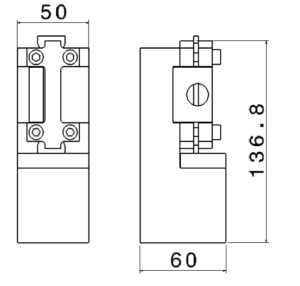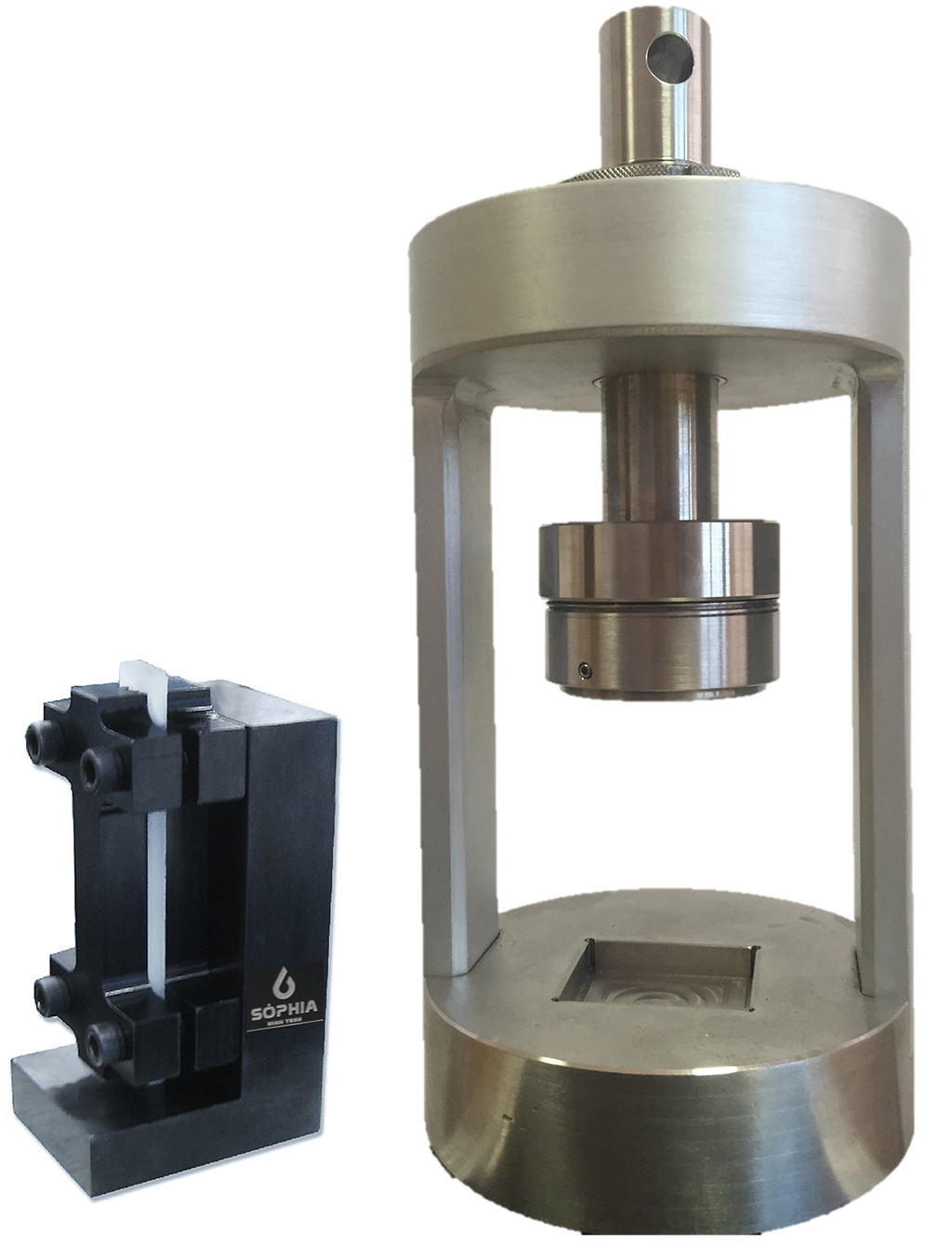
This test method has the purpose of determining the mechanical properties of unreinforced and reinforced rigid plastics, including high-modulus composites, when loaded in compression at relatively low uniform rates of straining or loading.
The test specimens employed are characterized of a standard shape. This fixture is used in order to test composite materials in uniaxial compression.
The straight-sided test specimen is 3.18″ long and 0.5″ wide, the thickness depending upon the material being tested. For a unidirectional composite, a thickness on the order of 0.040″ is typically used. Specimens used to determine compressive strength are tabbed on each end, typically with glass fabric/epoxy tabbing material. The distance between tabs (the gage length) is specified to be 0.188″. Because of this very short gage length, it is impractical to mount instrumentation to measure strains. Thus, two tests are specified.
A specimen without tabs is loaded to a minimum strain of 0.3 percent, using either a strain gage or an extensometer to measure strain. This permits the calculation of a compressive modulus. A second specimen of the same material, but with tabs, is then tested to failure, to determine the compressive strength. If it were attempted to load the untabbed specimen to ultimate, the specimen ends would typically crush before the material failed in a region away from the ends. Thus, a true compressive strength for the material would not be obtained.
To accommodate these two required tests, the fixture is provided with two outside support plates, in addition to the inside support plate mounted on the fixture base. The grooves in the pieces used for the strength determination run the full length. A second outside support plate (shown lying in the foreground in the left photograph) is also provided, in which the grooves are relieved over the 0.5″ central section, to provide clearance for a strain gage and its lead wires on one surface of the test specimen. When measuring strains, an untabbed specimen is used; a tabbed specimen of 0.188″ gage length does not provide adequate space to mount a strain gage.

| Test Standard | ASTM D 695 / ISO 604 |
| Maximum Load | 100 kN |
| Temperature Range | from -73 °C to 316 °C |
| Specimen Thickness | depending by the material |
| Specimen Width | 12.7 mm |
| Specimen Length | 80 mm |
| Mass | 4.00 kg |

Additional Information:
- ASTM Standard D 695-10 (2010), Compressive Properties of Rigid Plastics, American Society for Testing and Materials, West Cohshohocken, Pennsylvania (first issued in 1942).
- Boeing Specification Support Standard BSS 7260, Advanced Composite Compression Tests, The Boeing Company, Seattle, Washington (originally issued February 1982, revised December 1988).
- Boeing Document D888-10026, Test Methods for Advanced Composites, Revision A, Section C.2, The Boeing Company, Seattle, Washington, January 1996.
- SACMA Recommended Method SRM 1R-94, Compressive Properties of Oriented Fiber-Resin Composites, Suppliers of Advanced Composite Materials Association, Arlington, Virginia, 1994.
- F. Adams and E.Q. Lewis, Influence of Specimen Gage Length and Loading Method on the Axial Compressive Strength of a Unidirectional Composite Material, Experimental Mechanics, Vol. 31, No. 2, March 1991, pp. 14-20.
- F. Adams, Current Status of Compression Testing of Composite Materials, Proceedings of the 40th International SAMPE Symposium, May 1995, pp. 1831-1843.
- S. Welsh and D.F. Adams, Current Status of Compression Test Methods for Composite Materials, SAMPE Journal, Vol. 33, No. 1, January 1997, pp. 35-43.
Referenced Documents
ASTM Standards
- D 618 Practice for Conditioning Plastics for Testing
- D 638 Test Method for Tensile Properties of Plastics
- D 883 Terminology Relating to Plastics
- D 3410 Test Method for Compressive Properties of Polymer Matrix Composite Materials with Unsupported Gage Section by Shear Loading
- D 4000 Classification System for Specifying Plastic Materials
- D 4066 Classification System for Nylon Injection and Extrusion Materials
- D 5947 Test Methods for Physical Dimensions of Solid Plastics Specimens
- E 4 Practices for Force Verification of Testing Machines
- E 83 Practice for Verification and Classification of Extensometers
- E 691 Practice for Conducting an Interlaboratory Study to Determine the Precision of a Test Method



